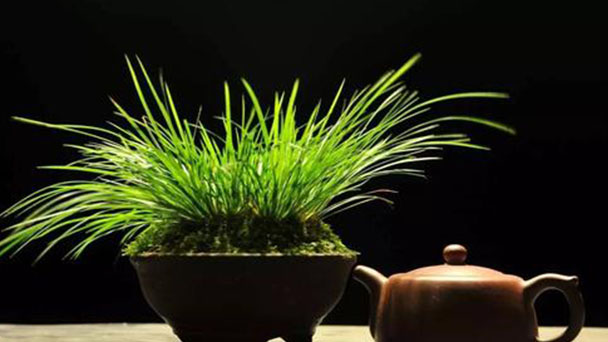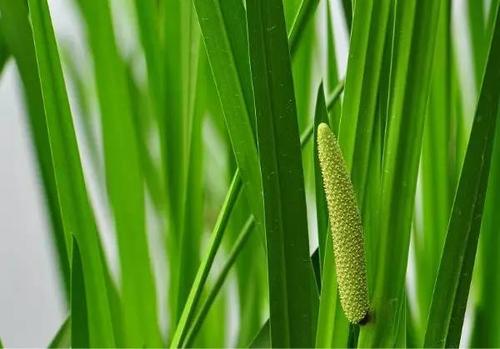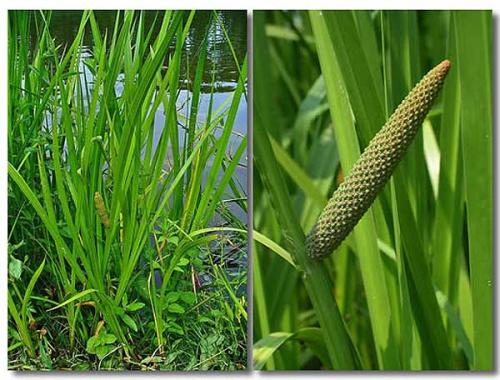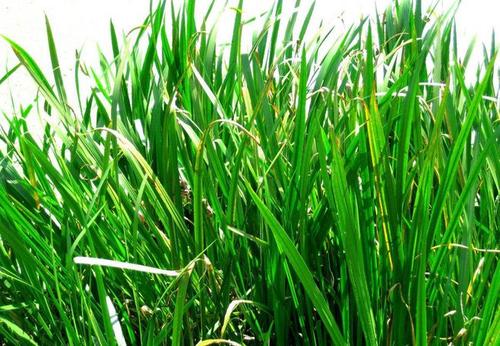How to care for Acorus calamus
Written by Maggie
Feb 07 2021

Acorus calamus, commonly known as Sweet Flag, are very easy to grow when planted right and in the right spot. Some varieties tolerate a drier soil while others like a consistently moist or boggy soil. Most like part shade however some will tolerate full to mostly sun. Therefore, in design and before planting, it's a good idea to know how to care for Acorus calamus.

How to care for Acorus calamus leaf tips drying
The drying of acorus calamus tip may be due to excessive light, insufficient moisture, soil discomfort, and lack of fertilizer, which may properly shade the plants.Water the plants properly if they are short of water. Soil discomfort can be changed for cultivation; Water - short fertilizer can be appropriate to the plant spread thin fertilizer.
1.Appropriate shade for Acorus calamus
Many people will grow Acorus calamus at home. When the leaf tips dry out, probably because the heat is so intense that the plants need to be transplanted to a cool, airy room. Acorus calamus does not like light, so the plants are properly exposed to astigmatism.
2. Increase watering for Acorus calamus
The Acorus calamus tip drying may be caused by insufficient watering at farming, with the plant lacking water, which can be properly added to the soil to increase soil moisture and allow the leaves to recover when the plant receives enough water. Acorus calamus requires much water, so it can be watered according to the principle of seeing dry and seeing wet.
3. Improve the soil for Acorus calamus
If the soil on Acorus calamus is not changed for a long time, the crust is not permeable enough to dry the leaves, so it needs to be replaced for Acorus calamus. The replacement soil can be mixed with peat, garden soil and river sand, and half of the old soil can be left when replaced, so that the plant can adapt to the new soil more quickly.
4. Increase fertilization for Acorus calamus
Acorus calamus does not require much fertilizer on the calamus, but too little fertilizer on the calamus causes the tips to dry out due to lack of nutrients. At this time, the plants can be properly applied with thin fertilizer, and the tips will return to their original condition after receiving enough nutrients. Acorus calamus is grown by applying phosphorus and potash fertilizer to the plants in a moderate amount each time.

How to care for Acorus calamus leaf yellowing
On the occasion of the yellowing of Acorus calamus leaves, we must apply the proper remedy, cutting the leaves as soon as the pot is changed. Stop the application of fertilizer when too much calamus is applied. Reduce watering when too much sunlight causes shading, and change the position of the leaves in improper air conditions.
1. Cut the yellow leaves of Acorus calamus
If your Acorus calamus is fresh on the calamus, the yellowing of the leaves is normal, because the root system of the calamus is damaged, unable to absorb water and nutrients, so removing some of the leaves and spraying the calamus with fertilizer does the damage.
2. Stop fertilizing Acorus calamus
Too much fertilizer, too much calamus, is one of the causes of the yellowing of Acorus calamus leaves, which must be stopped in time and the soil cleaned, rinsed with water after the whole plant is removed, dried and replanted.
3. Reduce watering Acorus calamus
Although Acorus calamus likes wet conditions and needs a lot of watering, farming Acorus calamus on the ground causes internal flooding and root rot if the pot bottom is not porous. This is necessary to stop watering and reduce the amount of water in the calamus.
4. Shading treatment for Acorus calamus
Too much light on the calamus also causes the leaves of Acorus calamus to turn yellow, especially in the summer midday heat, which causes the leaves of Acorus calamus to be burned. The shading is done in time, and the calamus is cured by placing it on the astigmatism.
5. Air environment for Acorus calamus
Acorus calamus is sensitive to the ambient environment, so it must not be placed in the smoky calamus, or the leaf will turn yellow easily. At this time, Acorus calamus must be moved to the fresher air for curing, while in the high quality calamus the leaf's yellowing will be relieved.

Latest Updated
- Benefits of Bugleweed - 7 Science-backed Health Benefits
- Bugleweed Dangers & Side Effects - Is It Poisonous?
- How to Plant Evergreen Trees - What You Should Know
- When to Plant Evergreens - Grow Guide for Evergreen Trees
- 12 Wonderful Evergreen Shrubs for Your Garden
- 12 Popular Evergreen Plants with Pictures for Beginners
- When And How To Prune A Lilac Bush Like a Pro
- How to Grow & Care for Lilac Vine (Hardenbergia Violacea)
- Japanese Lilac Tree (Syringa Reticulata) Care & Propagation Guide
- Shumard Oak Pros and Cons - What to Know
Popular Articles
- Winter maintenance of Antirrhinum Majus
- How to Grow Terminalia Mantaly Tree
- How to Grow and Care for Crossostephium Chinense
- How to grow Antirrhinum Majus in spring
- Peristeria Elata (Dove Orchid) Profile: Info & Care Guide
- Underwatered Snake Plant (Sansevieria Trifasciata) - Signs And How To Fix
- How to Care for Brazilian Jasmine Plant (Mandevilla Sanderi)
- How to Grow & Care for Graptopetalum Purple Delight in Summer
- Rosa Chinensis (China Rose): Plant Growing & Care Tips
- How to Care for Baby Sun Rose (Aptenia Cordifolia)